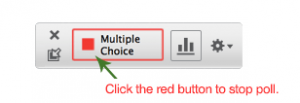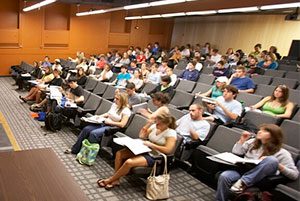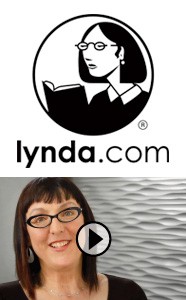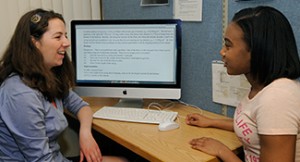Most of us can identify with the chagrin students feel when they earn a grade that they’re not happy about. But, as with most of life’s stings, the disappointment comes with a learning opportunity. An exam wrapper (or assignment or project wrapper) can help students understand what happened and what they can do to improve their learning.
A wrapper is a tool, a series of questions on a form that students fill out after they get their exam grade. In short, they’re asked to identify and reflect upon their own actions and behaviors when studying. This process helps to develop metacognition or meta learning; students increase their understanding of themselves as learners and see the correlation between their successes or their less-than-ideal grades to their personal actions and behaviors.
Some faculty follow up with a class discussion or they request that students visit them individually during office hours to talk about what they wrote. Sometimes the wrappers are returned to students prior to the next exam, in time for them to reflect again and take steps to adjust their actions.
The following steps are from Duke University’s Center for Instructional Technology:
Guidelines for using exam wrappers
- Explain to the students why you are using exam wrappers.
- Give the students time to fill out the exam wrapper in class. Spending class time encourages the students to take exam wrappers seriously.
- Collect the exam wrappers.
- Review the exam wrappers for ideas for how you can help students succeed.
- Return the exam wrappers to your students before the next exam. You may give students a few minutes in class to read their exam wrappers and prepare a study plan.
A few of short readings about exam wrappers:
From Dede Delaughter, University of North Georgia, Using Exam Wrappers as a Learning Tool
From Carnegie Mellon’s Eberly Center, Exam Wrappers (Marsha Lovett and her colleagues at CMU are credited for developing the exam wrapper)
From Carleton College, Teaching Metacognition



 Even if you have extensive teaching experience, the first day of class can create some nervous jitters. So, we’ve collected a few suggestions, tips, and resources here that will help your class get off to a good start.
Even if you have extensive teaching experience, the first day of class can create some nervous jitters. So, we’ve collected a few suggestions, tips, and resources here that will help your class get off to a good start.



 According to Dr. Michael Wesch, his new website,
According to Dr. Michael Wesch, his new website,